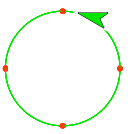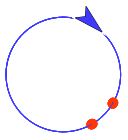- "U2L1-Predicates"

-
The video below shows almost all you need to do to define
 , but an important step is missing.
, but an important step is missing.
- You must choose the hexagonal shape to define your block as a predicate rather than a command.
- You must use the
 block to report the result.
block to report the result. - What else must be done before clicking OK?
The video also shows a different (optional) way to create an input name. You can, if you like, type the title text and input name at the same time, and then change the part that you want to use as an input name by clicking on it and choosing "input name." Use whatever way you like best. - Test your new block to make sure it works properly.
-
To create realistic dialogues, a program needs to adjust some words to fit others. For example, it needs to know when to use a or an. A peach or an peach? A apple or an apple?
To decide, it needs a predicate that tests the next letter to see if it's a vowel. It should work like this:
There are many ways to create a block like this. Here's one way, started for you.
Becausevowel?outputs onlytrueorfalse, remember to choose the hexagonal predicate shape when you first define the block.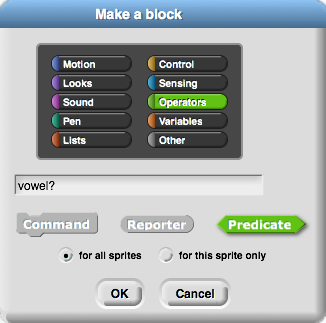
Complete it, test it, and save it for future use.
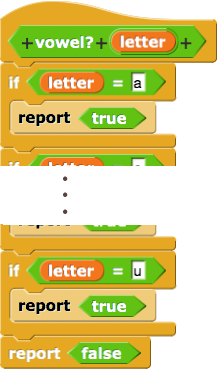
-
When you define these blocks, you will need to choose the rounded reporter shape.Use

of.png) to define a block
to define a block use "a" or "an" with (noun), that takes a word as input and reports either "a" or "an." - Now, use that block you just created to define a block
join "a" or "an" with (noun)that works like this:
You will need to use
.png) with two inputs. The block automatically shows a slot for only one input, but you can use the arrows
with two inputs. The block automatically shows a slot for only one input, but you can use the arrows  to increase or decrease the number of inputs.
to increase or decrease the number of inputs.
 means "if n is even," but programs are much easier to read and debug when the code says what it means, something like
means "if n is even," but programs are much easier to read and debug when the code says what it means, something like  or
or  .
.  reports 0 only when the sprite's
reports 0 only when the sprite's  is
is 
 reports 0.
reports 0. 
 report
report 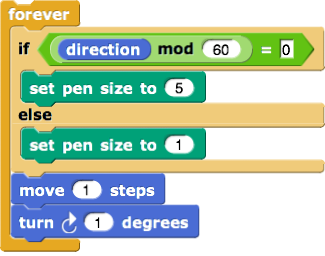
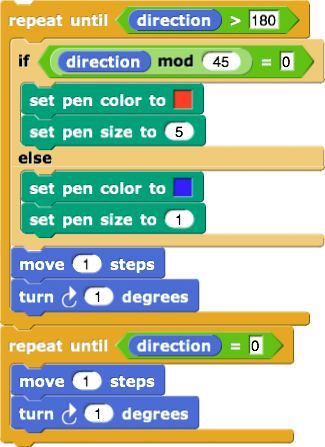
 , you used
, you used  ?
?  ?
? instead of
instead of  ?
?